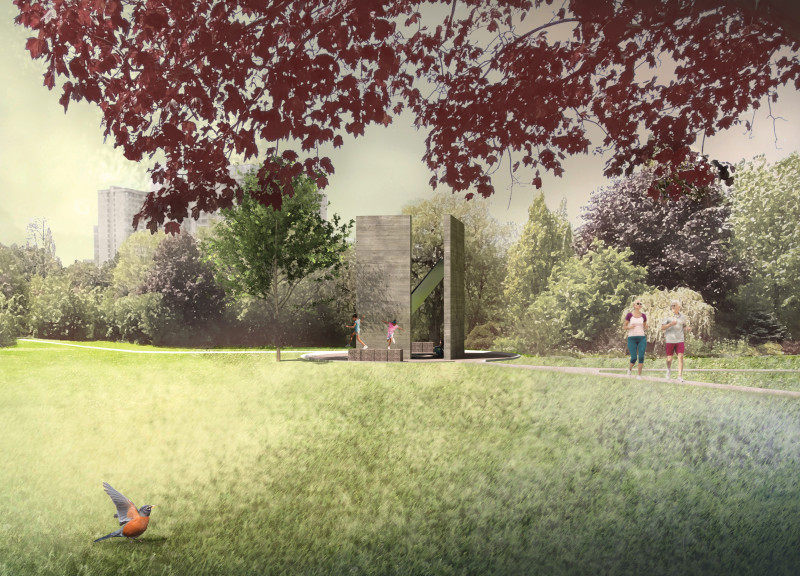5 key facts about this project
The memorial engages with themes of memory, loss, and resilience within a carefully designed landscape. Located in a historically significant area, it serves to honor the victims and survivors of past genocides. The design concept centers around a powerful question: "Is it green there now?" This inquiry captures feelings of fear and hope, inviting visitors to consider the impact of historical events while fostering a commitment to compassion in the future.
Conceptual Framework
Focus on visitor interaction and movement defines the memorial. As people walk through the space, their experiences and perceptions change with the light and their positioning. This approach encourages multiple interpretations, combining personal narratives with the historical context present in the memorial.
Spatial Experience
Absence and presence play a crucial role in the spatial design, prompting reflection on collective memory. Key questions appear throughout the structure, creating an atmosphere that shifts between deep thought and serene calm. The arrangement of elements fosters connections to themes of loss and renewal, emphasizing the complexities of human experience.
Material Selection
The project includes board-formed concrete, known for its neutral and sturdy qualities. This choice aligns the memorial with its surroundings while maintaining a weighty presence. Semi-gloss stainless steel surfaces add reflective qualities, capturing elements of the sky and natural environment. Grass is also incorporated, symbolizing life's cycles and regeneration, which serves as a reminder of nature's enduring resilience.
The combination of these materials shapes the memorial's character, with light and shadow playing significant roles. As visitors move through the space, they interact with these elements, creating a dialogue with the past. This thoughtful integration allows shared memory to take form, making the experience both personal and communal.





















































